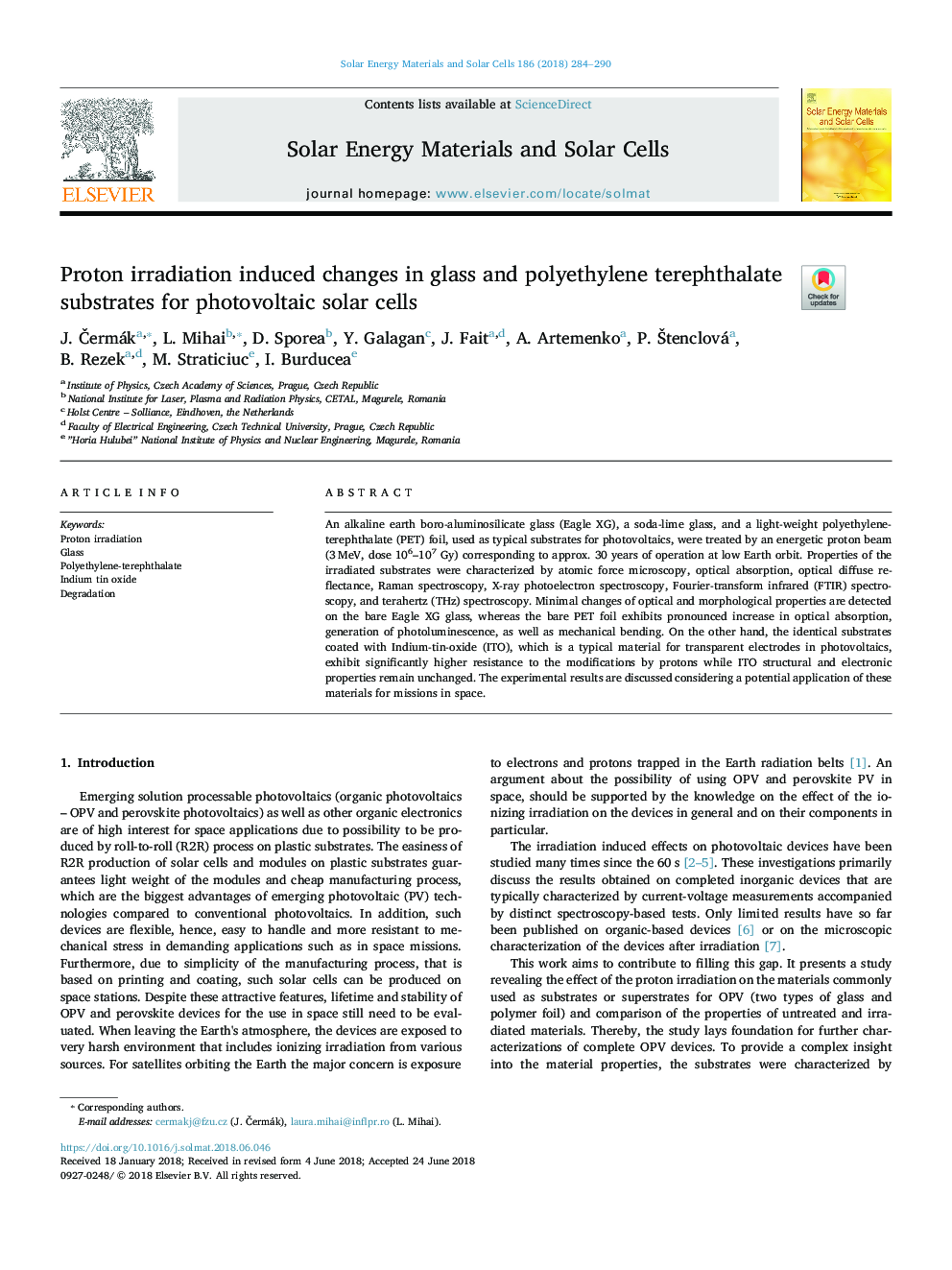| Article ID | Journal | Published Year | Pages | File Type |
|---|---|---|---|---|
| 6533859 | Solar Energy Materials and Solar Cells | 2018 | 7 Pages |
Abstract
An alkaline earth boro-aluminosilicate glass (Eagle XG), a soda-lime glass, and a light-weight polyethylene-terephthalate (PET) foil, used as typical substrates for photovoltaics, were treated by an energetic proton beam (3â¯MeV, dose 106-107 Gy) corresponding to approx. 30 years of operation at low Earth orbit. Properties of the irradiated substrates were characterized by atomic force microscopy, optical absorption, optical diffuse reflectance, Raman spectroscopy, X-ray photoelectron spectroscopy, Fourier-transform infrared (FTIR) spectroscopy, and terahertz (THz) spectroscopy. Minimal changes of optical and morphological properties are detected on the bare Eagle XG glass, whereas the bare PET foil exhibits pronounced increase in optical absorption, generation of photoluminescence, as well as mechanical bending. On the other hand, the identical substrates coated with Indium-tin-oxide (ITO), which is a typical material for transparent electrodes in photovoltaics, exhibit significantly higher resistance to the modifications by protons while ITO structural and electronic properties remain unchanged. The experimental results are discussed considering a potential application of these materials for missions in space.
Related Topics
Physical Sciences and Engineering
Chemical Engineering
Catalysis
Authors
J. Äermák, L. Mihai, D. Sporea, Y. Galagan, J. Fait, A. Artemenko, P. Å tenclová, B. Rezek, M. Straticiuc, I. Burducea,
